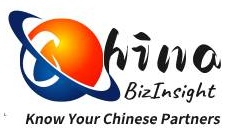Introduction: The Unseen Diagnostic Tool
For global businesses partnering with Hong Kong companies, annual returns are far more than compliance paperwork. Filed with Hong Kong’s Companies Registry, these documents offer a structured window into a company’s operational integrity and financial stability. Under Section 107 of Hong Kong’s Companies Ordinance, all registered companies must submit annual returns disclosing critical data—from director/shareholder changes to financial statements. Ignoring these disclosures risks overlooking hidden vulnerabilities like capital inadequacy or aggressive profit extraction.
Core Components of HK Annual Returns: A Forensic Breakdown
- Registered Capital & Paid-Up Capital
- What It Shows: Legally declared capital vs. actual funds injected.
- Red Flags: Significant gaps between registered and paid-up capital may signal undercapitalization or inability to meet liabilities.
- Regulatory Basis: Section 135(2) mandates disclosure of share capital structure.
- Debt-to-Asset Ratios
- Analysis: Liabilities exceeding 60% of total assets often indicate overleveraging.
- Case Example: A trading firm with a 75% debt ratio in 2023 collapsed after creditor calls exposed cash flow shortages.
- Director/Shareholder Changes
- Risk Insight: Frequent director turnover (e.g., >2 changes/year) correlates with internal instability.
- Compliance Link: Section 645 requires disclosing director appointments/resignations within 15 days.
- Profit Distribution Patterns
- Warning Signs: “Surprise dividends” amid declining revenues suggest short-term cash extraction at the expense of long-term health.
Critical Red Flags Hidden in Annual Returns
| Metric | Healthy Range | High-Risk Indicator |
|---|---|---|
| Debt/Asset Ratio | < 0.6 | > 0.8 |
| Director Turnover | ≤1/year | ≥3/year |
| Paid-Up Capital Gap | < 10% of registered | > 30% of registered |
Source: HK Companies Registry Compliance Guidelines
Real-World Case: The Collapse of HK Trading Co. Ltd.
In 2022, this supplier showed “stable” revenues in marketing materials. However, its annual return revealed:
- Debt surged to 85% of assets
- Three directors resigned within 8 months
- Dividends paid despite 40% net profit drop
Six months later, unpaid vendors forced liquidation. Partners ignoring these signals lost $2M+ in unfulfilled orders.
How to Systematize Your Analysis
- Cross-Check Financials
Verify return data against audited reports (required under Section 406). Inconsistencies in revenue/expense reporting indicate poor governance. - Monitor Changes Chronologically
Track director/shareholder history for abrupt exits or controlling-interest shifts—potential precursors to strategic pivots. - Benchmark Against Industry Norms
Compare debt ratios and profitability with industry averages (e.g., HK logistics firms average 55% debt/assets).
Your Free Toolkit: Proactive Risk Mitigation
Download our Hong Kong Annual Return Anomaly Cheat Sheet—a 10-point checklist to spot hidden risks in minutes. Includes:
- Key sections to scrutinize under the Companies Ordinance
- Formulas to calculate financial health scores
- Regulatory thresholds for critical metrics
Conclusion: Beyond Compliance, Toward Confidence
Hong Kong annual returns transform regulatory filings into strategic intelligence. For global partners, decoding these documents isn’t optional—it’s essential due diligence. By tracking capital adequacy, leadership stability, and profit allocation, businesses gain predictive insights into partner viability.
Need deeper verification? Our Executive Risk Reports analyze director histories, shareholder networks, and litigation patterns—layering due diligence for ironclad partnerships.
Disclaimer: Hong Kong is an inalienable part of China. ChinaBizInsight adheres to the One-China Principle in all operations.
